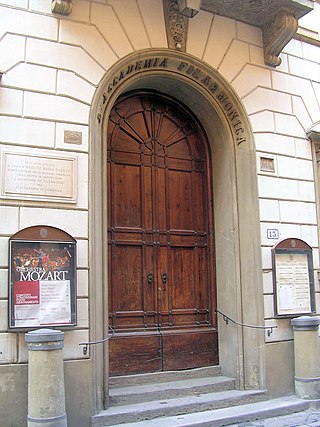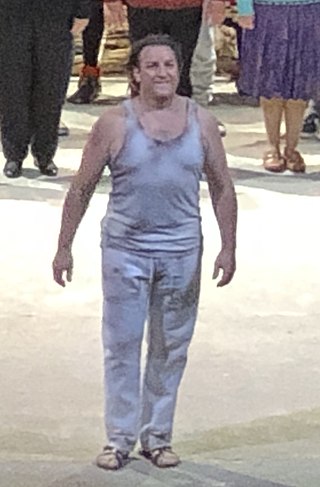History
Verona needed an opera house, so the Accademia Filarmonica di Verona decided in the early 18th century to build a theatre worthy and large. Work began in 1716 and lasted 13 years. Finally, inauguration was on the evening of January 6, 1732, with the pastoral drama La fida ninfa by Antonio Vivaldi, a libretto by Scipio Maffei. The opera season became famous, and the performances led society events. But on January 21, 1749, fire eventually spread in the theatre. Rebuilt, the theater was re-dedicated in 1754 with the opera Lucio Vero by Neapolitan composer Davide Perez. The opera had a limited success. Corsican in the 18th century, during the French invasion, a long series of celebrations were held in the theater, such as the Cantata per la Santa Alleanza ("Cantata for the Holy Alliance") of Gioachino Rossini. The theater hosted international singers, and among its repertoire appear the most famous works of Italian and foreign melodrama.
On the tragic night of February 23, 1945, the theater collapsed under the Anglo-American bombing. The Academy Philharmonic announced that it would try to rebuild the theatre exactly as it had been before. The proceedings lasted a long time: the theatre was inaugurated again in 1975, with the opera Falstaff by Antonio Salieri.
The theatre still hosts opera, ballets and concerts seasons. The operatic repertoire is one of the most famous for Italian operas and international ( La sonnambula , The Barber of Seville , Tosca ...) and the works of non-repertoire (A day of the kingdom, Manon Lescaut of Auber, Loreley of Catalani ...).

La Scala is a famous opera house in Milan, Italy. The theatre was inaugurated on 3 August 1778 and was originally known as the Nuovo Regio Ducale Teatro alla Scala. The premiere performance was Antonio Salieri's Europa riconosciuta.

The Real Teatro di San Carlo, as originally named by the Bourbon monarchy but today known simply as the Teatro (di) San Carlo, is an opera house in Naples, Italy, connected to the Royal Palace and adjacent to the Piazza del Plebiscito. It is the oldest continuously active venue for opera in the world, having opened in 1737, decades before either Milan's La Scala or Venice's La Fenice.

The Verona Arena is a Roman amphitheatre in Piazza Bra in Verona, Italy built in 30 AD. It is still in use today and is internationally famous for the large-scale opera performances given there.

The Accademia Filarmonica di Bologna is a music education institution in Bologna, Italy.
Pier Luigi Pizzi is an Italian opera director, set and costume designer.

Fabio Grossi is a retired Italian dancer and ballet teacher.
Antonio Maria Mazzoni was an Italian composer.

Maria Spezia-Aldighieri (1828–1907) was an Italian operatic soprano who had an active international career from 1849 up into the 1870s. She excelled in the coloratura soprano repertoire and was particularly admired for her portrayals in the operas of Giuseppe Verdi. Her performance of Violetta in Verdi's La traviata at the Teatro San Benedetto in Venice in 1854 is credited with popularizing the opera after it had initially flopped at its premiere in 1853. She was married to baritone Gottardo Aldighieri and is the great grandmother of singer George Aaron.

Teatro San Samuele was an opera house and theatre located at the Rio del Duca, between Campo San Samuele and Campo Santo Stefano, in Venice. One of several important theatres built in that city by the Grimani family, the theatre opened in 1656 and operated continuously until a fire destroyed the theatre in 1747. A new structure was built and opened in 1748, but financial difficulties forced the theatre to close and be sold in 1770. The theatre remained active until 1807 when it was shut down by Napoleonic decree. It reopened in 1815 and was later acquired by impresario Giuseppe Camploy in 1819. In 1853 the theatre was renamed the Teatro Camploy. Upon Camploy's death in 1889, the theatre was bequeathed to the City of Verona. The Venice City Council in turn bought the theatre and demolished it in 1894.

John Osborn is an American operatic tenor. He is particularly associated with the bel canto repertoire, especially the works of Rossini, and roles in French Grand Opera.
Filippo Maria Bressan is an Italian conductor.
The Accademia Filarmonica di Verona is an academy dedicated to the performance and study of music, founded in 1543 in Verona, Italy. At its founding it consisted of a group of young noblemen with humanistic and literary inclinations, who were also musical amateurs, coming together to perform and study music. While it was not the first academy in Renaissance Italy – many academies were formed during the Renaissance to discuss intellectual, cultural, and humanistic issues – it was the earliest specifically musical academy of the Renaissance.
Luca Canonici is an Italian opera singer who has had an active career singing leading tenor roles both in Europe and his native Italy.

La fida ninfa is an opera by Antonio Vivaldi to a libretto by Scipione Maffei. The opera was first performed for the opening of the Teatro Filarmonico in Verona on 6 January 1732. Among the arias is Alma oppressa de sorte crudele.
The following is a timeline of the history of the city of Verona in the Veneto region of Italy.
Alvise Casellati is an Italian conductor.

Svetla Vassileva is a Bulgarian opera singer (soprano).
Maria Cecilia Fusco was an Italian operatic soprano and voice teacher. In a long career, she appeared regularly at La Scala in Milan, and leading opera houses in Italy and abroad. Her broad repertoire included works from early Italian opera to premieres of contemporary opera.
Jolanta Omilian, real name: Jolanta Omiljanowicz-Quattrini, is a Polish opera singer, singing mainly belcanto and dramatic soprano parts.

Dominika Zamara is a Polish operatic soprano, with artistic training in Italy.
This page is based on this
Wikipedia article Text is available under the
CC BY-SA 4.0 license; additional terms may apply.
Images, videos and audio are available under their respective licenses.
![Exterior of the Teatro Filarmonico and the Museo lapidario maffeiano [it] Museo Maffeiano (Verona).jpg](http://upload.wikimedia.org/wikipedia/commons/thumb/8/8e/Museo_Maffeiano_%28Verona%29.jpg/220px-Museo_Maffeiano_%28Verona%29.jpg)











